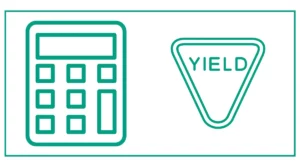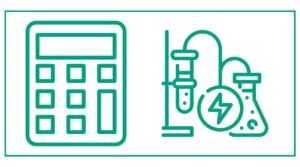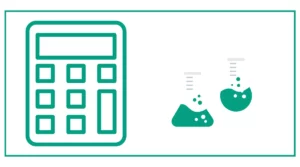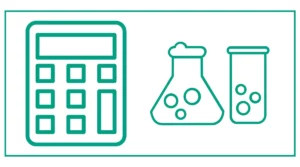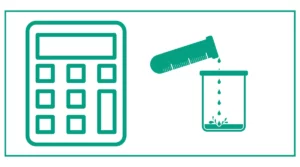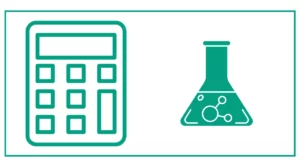Charles Law Calculator
The Charles Law calculator helps you calculate the initial volume, final volume, initial temperature, and final temperature.
Enter any values to calculate the fourth one.
For example, if you want to calculate the final temperature (T₂) enter initial volume( V₁), initial temperature( T₁), and final volume (V₂).
French scientist Jacques Charles presented Charles’s law in 1780. It states that the volume of an ideal gas at constant pressure is directly related to its absolute temperature. If the pressure on a sample of a dry gas stays the same, the Kelvin temperature and the volume will be directly related.
V1/T1=V2/T2
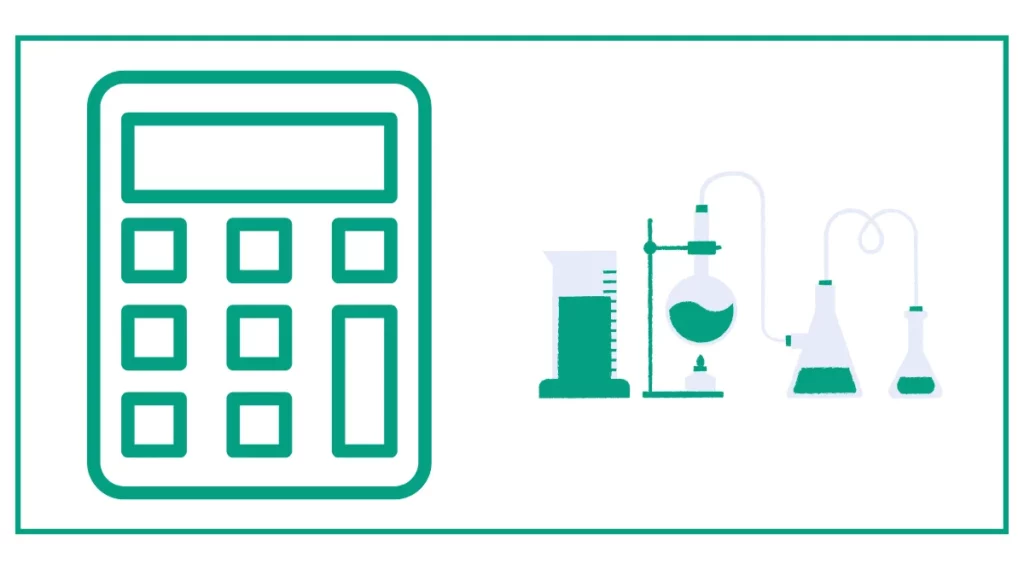
What is Charles’ Law?
Charles’ Law states that the volume of an ideal gas is directly proportional to its absolute temperature when the pressure remains constant. In simpler terms, as the temperature of a gas increases, its volume increases proportionally, and vice versa. This relationship can be expressed mathematically as:
V₁/T₁ = V₂/T₂
Where:
- V₁ is the initial volume
- T₁ is the initial temperature (in Kelvin)
- V₂ is the final volume
- T₂ is the final temperature (in Kelvin)
How the Charles Law Calculator Works
The Charles Law Calculator is a tool designed to simplify calculations related to Charles’ Law. It allows users to input known values and calculate the unknown parameter. Here’s how it works:
- Input the known values for initial volume (V₁), initial temperature (T₁), and either final volume (V₂) or final temperature (T₂).
- Leave the unknown value blank.
- The calculator uses the Charles’ Law equation to determine the missing value.
- The result is displayed, showing the calculated parameter.
This tool is particularly useful for students, scientists, and engineers working with gas-related problems or studying thermodynamics.
Applications of Charles’ Law and the Calculator
Charles’ Law has numerous practical applications in various fields. Here are two relevant examples:
- Hot Air Balloons: Hot air balloons operate on the principle of Charles’ Law. As the air inside the balloon is heated, its volume expands, making the balloon less dense than the surrounding air and causing it to rise. The Charles Law Calculator can be used to determine how much the volume of air in the balloon will increase with a given temperature change, helping balloonists predict the balloon’s behavior.
- Tire Pressure: When driving long distances, tire pressure can increase due to heat generated from friction. This increase in temperature causes the air inside the tires to expand, following Charles’ Law. Using the calculator, mechanics and drivers can estimate how much the air volume (and consequently, the pressure) in tires might increase based on temperature changes, helping to maintain safe driving conditions.
The Ideal Gas Law and Its Relationship to Charles’ Law
Charles’ Law is one component of the more comprehensive Ideal Gas Law, which describes the behavior of ideal gases under various conditions. The Ideal Gas Law equation is:
PV = nRT
Where:
- P is pressure
- V is volume
- n is the number of moles of gas
- R is the universal gas constant
- T is temperature (in Kelvin)
Charles’ Law can be derived from the Ideal Gas Law when pressure and the number of moles of gas are held constant. This relationship highlights the interconnectedness of various gas laws and their importance in understanding gas behavior.
Other Gas Laws and Calculators
While the Charles Law Calculator is a valuable tool, it’s important to understand that it’s part of a larger family of gas law calculators. These include:
Boyle’s Law Calculator
Boyle’s Law describes the inverse relationship between pressure and volume of a gas at constant temperature. The Boyle’s Law Calculator helps determine how changes in pressure affect gas volume, or vice versa.
Gay-Lussac’s Law Calculator
Gay-Lussac’s Law relates the pressure and temperature of a gas at constant volume. This calculator is useful for understanding how temperature changes affect gas pressure in a fixed container.
Combined Gas Law Calculator
The Combined Gas Law Calculator incorporates Boyle’s Law, Charles’ Law, and Gay-Lussac’s Law into a single equation. It’s particularly useful when dealing with problems involving changes in pressure, volume, and temperature simultaneously.
Practical Uses of the Charles Law Calculator
The Charles Law Calculator has numerous practical applications across various fields:
- Industrial Processes: In manufacturing and chemical industries, understanding how gases behave under different temperatures is crucial for designing and optimizing processes. The calculator can help engineers predict how gas volumes will change in reaction vessels or storage tanks as temperatures fluctuate.
- Meteorology: Weather balloons use the principle of Charles’ Law. As these balloons rise through the atmosphere, the decreasing air pressure causes them to expand. Meteorologists can use the Charles Law Calculator to estimate the volume of weather balloons at different altitudes based on temperature changes.
- HVAC Systems: Heating, Ventilation, and Air Conditioning (HVAC) professionals use Charles’ Law principles to design efficient systems. The calculator can help determine how air volume changes within ductwork as temperatures vary, ensuring proper airflow and system performance.
- Scuba Diving: Divers need to understand how gas volumes change with depth and temperature. The Charles Law Calculator can be used to estimate how the volume of air in a diver’s lungs or equipment might change due to temperature differences at various depths.
Limitations of Charles’ Law and the Calculator
While the Charles Law Calculator is a useful tool, it’s important to understand its limitations:
- Ideal Gas Assumption: Charles’ Law assumes we’re dealing with an ideal gas. Real gases may deviate from this behavior, especially at high pressures or low temperatures.
- Constant Pressure: The law assumes constant pressure, which may not always be the case in real-world scenarios.
- Phase Changes: The calculator doesn’t account for phase changes. If a gas condenses to a liquid or sublimes to a solid, Charles’ Law no longer applies.
- Extreme Conditions: At very high temperatures or pressures, gases may behave differently than predicted by Charles’ Law.
Understanding these limitations helps users apply the Charles Law Calculator appropriately and interpret results accurately.
How to Use the Charles Law Calculator Effectively
To get the most out of the Charles Law Calculator, follow these steps:
- Identify the Known Parameters: Determine which values you already know (initial volume, initial temperature, final volume, or final temperature).
- Convert Temperatures to Kelvin: Remember, Charles’ Law requires temperatures in Kelvin. To convert from Celsius to Kelvin, add 273.15 to the Celsius temperature.
- Input Known Values: Enter the known values into the calculator, leaving the unknown value blank.
- Interpret the Results: After calculation, analyze the result in the context of your problem. Consider whether the outcome makes sense given the situation.
- Check Units: Ensure that all input and output units are consistent. The calculator typically uses cubic meters for volume and Kelvin for temperature.
Thermodynamic Processes and Charles’ Law
Charles’ Law describes an isobaric process, which is one of several important thermodynamic processes:
Isobaric Process
In an isobaric process, pressure remains constant while temperature and volume change. Charles’ Law directly applies to this type of process.
Isochoric Process
An isochoric process occurs at constant volume. While not directly related to Charles’ Law, understanding this process helps in comprehending the full spectrum of gas behavior.
Isothermal Process
In an isothermal process, temperature remains constant. This process is described by Boyle’s Law rather than Charles’ Law.
Understanding these different processes helps in applying the appropriate gas law and calculator for specific situations.
References
- Britannica, T. Editors of Encyclopaedia (2023, February 28). Charles’s law. Encyclopedia Britannica. britannica.com/science/Charless-law
- 14.4: Charles’s Law. (2016, June 27). Chemistry LibreTexts. chem.libretexts.org/Bookshelves/Introductory_Chemistry/Introductory_Chemistry_(CK-12)/14%3A_The_Behavior_of_Gases/14.04%3A_Charles’s_Law
